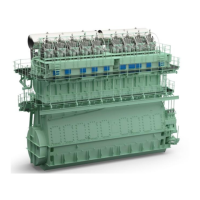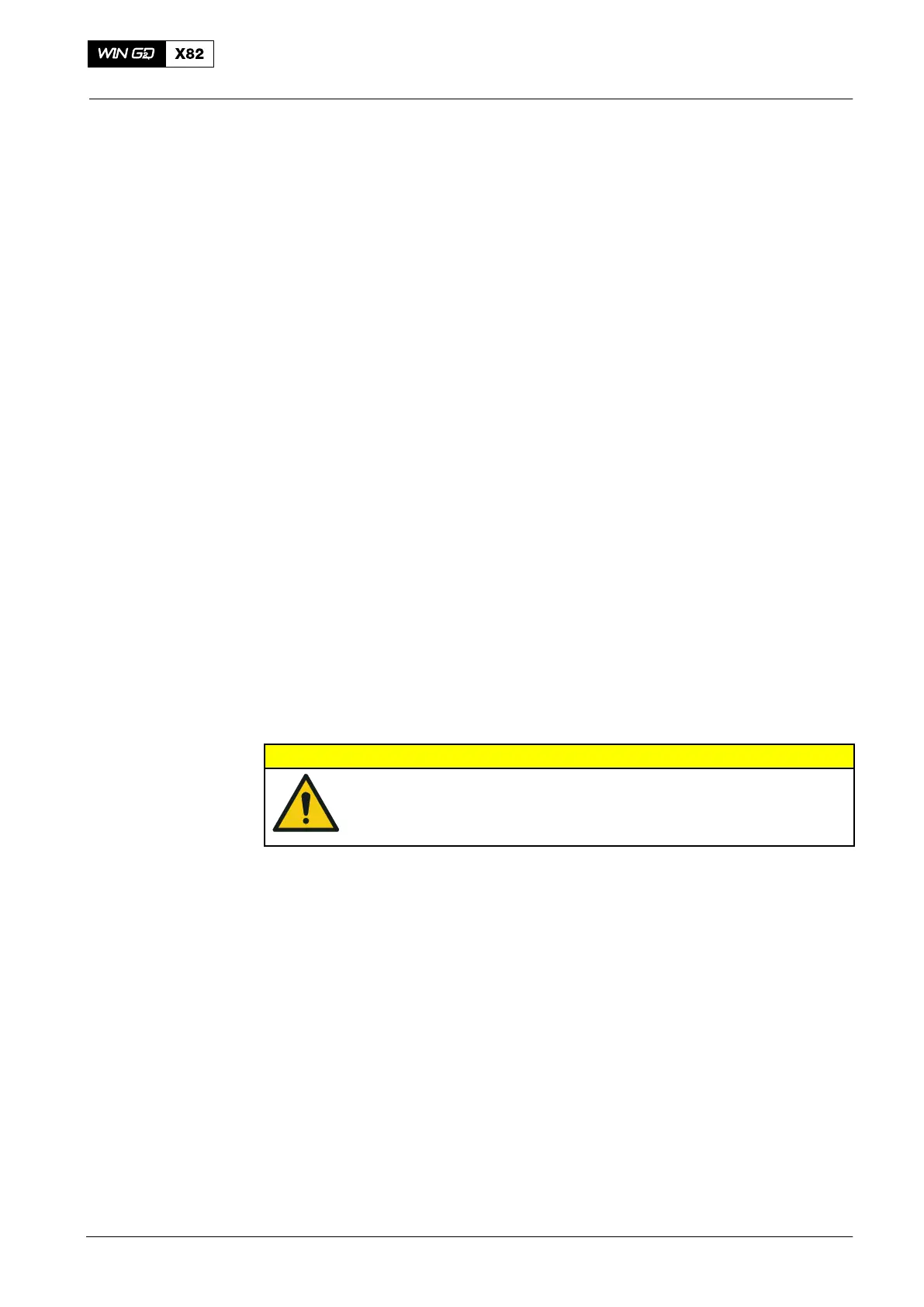Operation
6606−1/A1
Winterthur Gas & Diesel Ltd.
1/ 5
Scavenge Air Cooler
1. General 1..........................................................
2. Operating Instructions 1............................................
3. SAC Air Side − Clean during Operation 3.............................
3.1 Intervals 3....................................................
3.2 Cleaning Agents 3............................................
3.3 Procedure 3..................................................
3.4 Instruction Leaflets 5..........................................
1. General
A Scavenge Air Cooler (SAC) is installed downstream of the turbocharger. The SAC
decreases the temperature of the compressed / heated air that flows from the
turbocharger. The standard cooler is a single-stage multi-pass item. The water flows
through the cooler in the opposite direction of the air flow more than one time. The
temperature difference of the water and scavenge air is thus applied equally along all
of the SAC.
2. Operating Instructions
If air collects in the cooling water system of the SAC, problems for the engine and the
SAC can occur. Thus, the SAC must operate correctly.
You must do regular checks of the SAC temperature. See the data in 0250-2
Operating Data Sheet.
If the level switch (17, Fig. 1) of the condensate collector (15) activates an alarm
during operation, the cause (condensate water or SAC cooling water) must be found.
If the cause is SAC cooling water, the SAC must be disassembled and repaired (see
the Maintenance Manual 6606−1).
To prevent damage to the SAC, the cooling water must flow correctly during
operation. The cooling water flow must not be decreased at part load, or during
maneuvering.
CAUTION
Damage Hazard: Do not use the butterfly valves at the cooling
water inlet and outlet pipes to control the flow rate. The water
separators (which are plastic) could be damaged because the
scavenge air temperatures are too high at higher loads.
For data about operation with a defective SAC, see 0550-1 paragraph 1.
During correct operation of the SAC, record the temperature difference between the
scavenge air outlet and the cooling water inlet. You use the temperature difference as
a guide. You must do regular checks of the two temperature values and compare
them with the temperatures you recorded.
If the temperature difference increases and the engine load and cooling water flow do
not change, the SAC is dirty.
If the water side of the SAC is dirty, the scavenge air temperature increases.
If the air side of the SAC is dirty, the pressure difference (Dp) of the scavenge air
through the SAC increases. This does not show the full effect of the dirt because an
increased resistance also causes a decreased air flow from the turbocharger. For
more data about the SAC during operation, see 0250-1 Operating Data Sheet.
Higher scavenge air temperature and decreased air flow cause increased thermal
load of the engine and higher exhaust gas temperatures.
You can clean the air side of the SAC during engine operation, see paragraph 3.
You can clean the water side of the SAC only when the engine has stopped. For data
to clean the water side of the SAC, see the Maintenance Manual 6606-1.
Operating Instructions and Cleaning
2017−08

